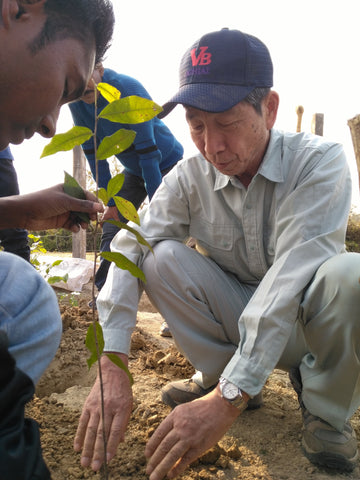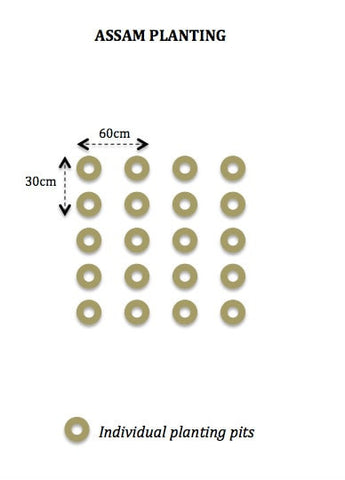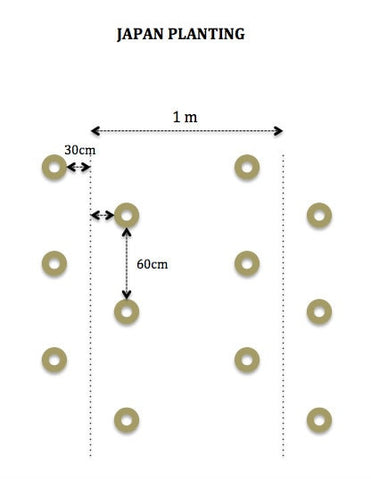At Chota Tingrai Tea Estate, we constantly experiment with new methods in cultivating tea. Our latest experiment, taking place in a small portion of MP 9, will utilize Japanese planting and machine plucking.

Meet Tani-san, a senior tea agronomist from Japan. He has come to India for the first time to learn how Assam grows tea, and teach us how Japan grows tea. Together, we are trying to adapt the Japanese planting style to Indian tea cultivars. Through this strategy, we hope to increase our per bush yields, and make them appropriate for machine plucking.
Tani-san speaks Japanese. Our field staff speak Assamese, Tea-tribe, and Hindi. It is fascinating to watch these tea experts talk about soil conditions, tea plant growth, seasons, weeding, watering and other planting aspects. Conversation flows in animated gestures, broken English and lots of laughing. The surprise on Tani-san’s face is hard to miss when he finds out that in India, the tea plantations need 5 feet deep drains to handle the excess water during the monsoons. The same surprise on our field team’s face when they learn that Japan has only 3-4 weeks of plucking in the whole year. Rest of the year – there is no tea production! How can we have such huge differences, and still be talking about the same plant?
After several hours of discussion and field visits, Tani-san requests our team to get the planting materials ready. As we start the process, we observe that a main difference between Indian and Japanese tea planting is the spacing. Since the spacing determines the shape and size of the tea bushes, this ends up informing the entire development of the plantation, and the eventual character of the tea.

First our team showed Tani-san how we plant tea in Assam. We plant the bushes in long straight blocks, with the plants spaced 30 cm apart. The planting is designed to encourage the bushes to grow into a solid table, and we pluck from the top of the table.

Then our field team, under the guidance of Tani-san, planted a 1 acre area in MP 9. He careful demonstrated a staggered pattern. This causes the plants to grow into rounded “loaves.” This allows the leaves to be plucked from the whole surface area of the bush, instead of just the top, thus increasing the yields.

Tani-san will be making a trip again in the Fall, to show us how to train the plants to make this ‘loaf’ like bush once they are 6 months old. We are looking forward to see how the training process differs from the Indian technique.
Stay tuned to see how the new Japanese and Indian planted new teas are doing! If you want to read more about organic tea cultivation check out how we prep land and make compost.

Hello.
Excellent article. Would love to visit and learn more on the Japanese techniques.
Very informative!!